Acupuncture & TCM Articles
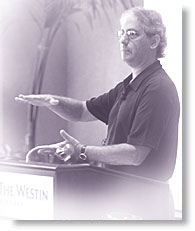
Articles by Jake Paul Fratkin, OMD, LAc
Jake Fratkin, OMD, LAc, has been in the practice of Oriental medicine since 1978. Following undergraduate and graduate training at the University of Wisconsin in Chinese language and philosophy and pre-medicine, he pursued a seven-year apprenticeship in Japanese and Korean style acupuncture with Dr. Ineon Moon and a two-year apprenticeship in Chinese herbal medicine with Drs. Zhengan Guo and Pak-Leung Lau in Chicago. He also spent a year in Beijing hospitals interning in advanced herbal medicine, specializing in gastrointestinal and respiratory disorders, and pediatrics. 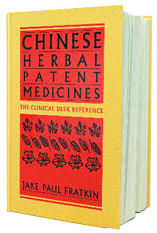 Dr. Fratkin is the author of several books, including Chinese Herbal Patent Medicines: The Clinical Desk Reference, and is the editor-organizer of Wu and Fischer's Practical Therapeutics of Traditional Chinese Medicine. In 1999, he was named the "Acupuncturist of the Year" by the American Association of Oriental Medicine.
Dr. Fratkin is the author of several books, including Chinese Herbal Patent Medicines: The Clinical Desk Reference, and is the editor-organizer of Wu and Fischer's Practical Therapeutics of Traditional Chinese Medicine. In 1999, he was named the "Acupuncturist of the Year" by the American Association of Oriental Medicine.
Chinese Herbal Patent Medicines: The Clinical Desk Reference
Hardback book, 1198 pages. This volume covers 1360 products, including 550 GMP level products and all of California FDB analysis on 505 products. Includes information on endagered animals, heavy metals, and pharmaceuticals. The text is organized into 12 groups, with a total of 109 chapters and includes material by Andrew Ellis, Subhuti Dharmananda, and Richard Ko. Over 80 pages of full-color photos (with English and Chinese cross-reference). Fully indexed.
Plotting Acute Cough
In my clinical practice, I treat someone with a cough every day. And in the winter, it might be 40 percent of the cases I see. In the absence of good herbal treatment, sudden-onset cough, once entrenched, can linger for weeks before resolving completely.
TCM offers one of the best therapies because it separates the cough into various differentiations. Acupuncture Today columnist Craig Williams authored two good articles (November 2006, January 2007 issues) on chronic cough for deficiency conditions, referring to classical Chinese formulas, plus the additions of dong chong xia cao (Cordyceps sinensis), ling zhi (Ganoderma lucidum), and other Chinese and Western herbs. And in a third article, he discussed ayurvedic herbs in treating chronic respiratory problems. Are we saturating you with articles on cough yet?1 I don't think so. The cough is such a frequent clinical presentation, and whereas Craig's articles discussed chronic cough, I will address the management of acute cough and how practitioners may treat it correctly. Many TCM practitioners mismanage the treatment of the cough by giving medicine for the wrong stage, not employing herbs to fight the causative microbes and not predicting the timing of when a cough will need new medicine to meet its progressive changes. To begin with, it's important to remember that all acute coughs are due to pathogenic microbes, with the lion's share being viral. Only 5 percent of coughs actually are bacterial.2 It's important for practitioners of TCM herbal medicine to evaluate whether viruses are playing an active enough part that antiviral herbs need to be added to the therapy. This most likely is in the very first stages of a cough, especially when signs of a common cold precede the cough, such as a runny or stuffy nose, achy muscles, headache, sore throat or slight fever. In this case, one should take herbs with strong antiviral properties, in addition to the formula for cough. This easily can be done by adding in products such as gan mao ling or chuan xin lian. As for the treatment of the cough itself, it's best to determine which stage the cough is presenting. I feel coughs can be categorized into seven distinct stages, the first four of these qualifying as acute cough and the last three as chronic cough; however, these last three may have had their origins in an acute cough. These stages can be plotted on a graph, if we allow the vertical bar to indicate temperature, and the horizontal bar to indicate viscosity. Temperature reads from cold to hot, and viscosity reads from wet to dry. Wet goes through the stage of very wet, to sticky, to dry.
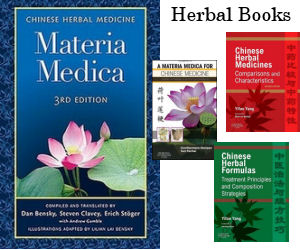
Stage 1: Pathogenic Wind-Heat This stage might immediately follow early signs of a common cold (achy, stuffy, sore throat), or it might appear as the first stage. The stage is distinguished as having a slight dry cough without any phlegm. The cough is slight or weak, but not as weak as the seventh stage, known as the yin deficiency cough. In contrast, yin deficiency cough occurs after an illness, while wind-heat cough occurs after health as an early stage of the common cold.
This stage will last from one to three days before either resolving (going away) or transforming into one of the other stages. The formula of choice is sang ju yin, a formula developed by Wu Ju-Tang in 1798. (Wu also is the formulator of yin qiao san.) The ingredients are sang ye (Folium Morus Alba), xing ren (Semen Prunus armeniaca), jie geng (Radix platycodon), lu gen (Rhizome phragmites), lian qiao (Fructus forsythia), ju hua (Flos chrysanthemum), bo he (Herba mentha), and gan cao (Radix glycyrrhiza). Sang ye dispels wind-heat from the lung, and it's reinforced by xing ren. Other heat-clearing herbs include lu gen, ju hua, bo he and lian qiao. Lian qiao has the additional quality of being an effective herb against respiratory viruses. Jie geng helps bring the formula to the lungs.
Stage 2: Lung Fire
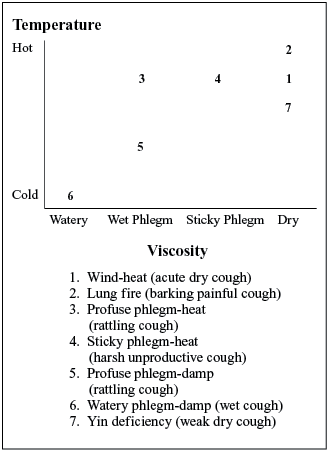
The next stage is that of lung fire.This is a particularly uncomfortable stage, manifested by a harsh barking cough. Here we have fire in the lung, which is to say extreme heat. It's always due to a pathogen, either viral or bacterial, and we commonly see it in children, including croup. This stage is quite short-lived, because the fire quickly encourages the lung to react protectively with phlegm and, untreated, this stage turns into phlegm-heat (Stage 3).
Lung fire actually is an easy stage to treat because fire easily clears with cold herbs such as huang qin (Radix scutellaria baicalenses) or zhi zi (Fructus gardenia). A good formula ordinarily would be the patent medicine qing fei yi huo wan (Gong Tingxian, 1587), but unfortunately, it can have a level of da huang that is too high for most Americans. Da huang at 18 percent might cause the patient to experience abdominal cramping or loose stools. Of course, if you are making the formula yourself, just reduce the amount of da huang to 6 percent or lower. Another appropriate formula is Gong Tingxian's formula huang lian shang qing pian, but here, the level of da huang is even higher, at 25.2 percent.3 One American company (Bio Essence) had the insight to reduce the dosage of da huang to 6.4 percent. The complete formula is as follows: zhi zi (Fructus gardenia), lian qiao (Fructus forsythia), jing jie (Herba schizonepeta), xuan shen (Radix scrophularia), huang qin (Radix scutellaria baicalenses), ju hua (Flos chrysanthemum), bo he (Herba mentha), da huang (Radix rheum) and huang lian (Rhizome coptis).
This is quite a cold formula, cold enough to extinguish lung fire. Significantly, herbs such as zhi zi, lian qiao, xuan shen, huang qin, da huang and huang lian – accounting for 61.5 percent of the formula – all have antimicrobial properties.
Other products come to mind for the lung fire stage. Seven Forests' Belamcanda 15 uses herbs such as she gan (Rhizome belamcanda), yu xing cao (Herba houttuynia), bai bu (Radix stemona) and lu gen (Rhizome phragmites) to clear harsh coughs due to heat. The classical formula yang yin qing fei tang is available as a syrup, and is a good adjunct, especially to relieve cough during the middle of the night.
Stage 3: Phlegm-Heat The above formulas can clear lung fire cough quickly, within one to two days, but if the cough doesn't go away, it will transform into phlegm-heat. Stage 3 always exhibits a rattle cough, which can expectorate relatively easily. The discharge is bright yellow (acute heat), brownish-yellow (a little later in the duration of the cough) or greenish-brown (after acute heat has left and is transforming to phlegm-damp.)4 In children who tend to swallow their phlegm, a confirmation can be made if yellow nasal discharge accompanies the cough.
Phlegm is difficult to transform.5 This is why it's best to aggressively treat cough before it reaches the phlegm stage, namely at the wind-heat or lung fire stages. The best substances to transform phlegm involve bile or gallbladder from snakes or pig, which emulsify phlegm the same way it emulsifies fat. Often, herbs such as nan xing (Rhizome arisaema) or chen pi (Pericarpium citrus reticulata) are stir-fried in bile (dan) to enhance an anti-phlegm effect. The better products will employ dan nan xing, for example. The formula of choice is qing qi hua tan tang (Wu Kun, 1584), which is available from many manufacturers. The ingredients include the following: dan nan xing (Rhizome arisaema), ban xia (Rhizome pinellia), gua lou ren (Semen trichosanthes), huang qin (Radix scutellaria baicalenses), chen pi (Pericarpium citrus reticulata), xing ren (Semen prunus armeniaca), zhi shi (Fructus immaturus citrus aurantium) and fu ling (Sclerotium poria cocos).
This formula (and formulas like it) can be effective, but once phlegm settles in, it's difficult to remove. Untreated, this stage will last at least seven days, and sometimes up to six weeks. With herbal formulas, we expect gradual improvement over seven days, with lessening of frequency and severity of cough. The addition of the loquat-fritillaria syrups are somewhat helpful, but should never be relied on in isolation. I like to use the enzyme bromelain, 1 to 2 capsules without food twice a day, to help break up phlegm.
In both lung fire (Stage 2) and phlegm-heat (Stage 3), when there is a strong microbial component (which is to say harsh and stubborn), I use the syrup Hsiao Keh Chuan: Special Medicine for Bronchitis (Harbin), which contains the single herb man shan hong (Radix rhododendron dauricum). The taste is a little bitter, and use for longer than three days is considered slightly toxic. I have no reservations giving it to children, however, if we use it for two days or so.
Stage 4: Sticky Phlegm-Heat
This stage usually comes after a more wet stage and manifests as a harsh cough with no expectoration. By listening to the cough, or with a stethoscope, you can determine that the lungs still have phlegm. The cough has a rattling nature to it, and if there is expectoration, it usually is small tiny pieces. This stage can come before or after phlegm-heat (Stage 3). It indicates heat with consumption of yin, and the therapeutic strategy is to clear heat, transform phlegm, and tonify lung yin. This last part is important. Usually, if we tonify lung yin during phlegm, it aggravates and builds the phlegm. But in this stage, it's important to moisten the lungs slightly in order to allow the phlegm to release from the bronchioles. This can be accomplished with herbs like mai men dong (Tuber ophiopogon), tian men dong (Tuber asparagus), and so on. But it still is important to clear heat and transform phlegm. Formulas like ning sou wan6 or Broncho-Phase (from Tango) address this stage.7 The ingredients for Broncho-Phase include she gan (Rhizome belamcanda), gua lou ren (Semen trichosanthes), tian men dong (Tuber asparagus), chuan bei mu (Bulbus fritillaria cirrhosa), zhi ke (Fructus citrus aurantium), huang qin (Radix scutellaria baicalenses), bai bu (Radix stemona), chuan xin lian (Herba andrographis), zhi zi (Fructus gardenia), sang bai pi (Radix cortex morus alba), jie geng (Radix platycodon), xing ren (Semen prunus armeniaca) and gan cao (Radix glycyrrhiza). Stage 5: Phlegm-Damp
This stage usually comes after phlegm-heat, and can settle in for a long period. Here, the phlegm is white or clear and indicates that all heat pathogens are gone. There usually is a chronic rattly cough, with easy expectoration. The treatment strategy is to transform phlegm-damp, using formulas such as qi guan yan wan. Because this stage (as well as the two stages described below) enters the realm of chronic, rather than acute cough, I will not go into much detail.
Stage 6: Watery Phlegm-Damp This stage exhibits excessive water in the lung, and often is seen in emphysema in the elderly. Here, the mouth seems full of water, with the patient actually spitting out water. The synergistic use of herbs such as lai fu zi (Semen raphanus), bai jie zi (Semen brassica) and su zi (Fructus perilla) are used in prescription formulas such as san zi yang qing tang. This stage of cough is not particularly a sequela of an acute stage, but can stand alone as a chronic condition.
Stage 7: Deficiency of Lung Yin Deficiency of lung yin may follow a long course of cough, and also can be seen in smokers and patients with AIDS or tuberculosis. It can stand alone as a progression of deficiency of kidney yin in older patients, or following chronic illness. Recovery is slow due to long-term deficiencies of qi which accompany deficiency of yin. It should not be confused with early pathogenic wind-heat (Stage 1). Effective prescriptions include bai he gu jin tang, mai wei di huang wan, and sha shen mai men dong tang.
In conclusion, please pay attention to the exact stage of a cough, as demonstrated in the chart included in this article. With careful attention and foresight that these stages can and will transform, appropriate Chinese herbal interventions will prove successful. References
1) I have previously addressed pertussis (whooping cough) in articles for Acupuncture Today (July 2006 and September 2006).
2) "Most coughs in children are brought on by the viruses that cause colds and the flu. Rarely, pertussis (whooping cough) or pneumonia is the cause of a prolonged cough." Department of Health, Oregon. www.patient.co.uk/showdoc/23069192. Also, "Antibiotics don't work for acute bronchitis. Now we have strong evidence saying that it shouldn't be used for this purpose." The Lancet, May 11, 2002;359:1648-1654.
3) For complete formula with percentages, see Fratkin, Chinese Herbal Patent Medicines, The Clinical Desk References (Shya Publications 2001) p.108-110.
4) Rarely, the discharge will be a caseous brown, with the texture of a moldy yogurt. This actually is bacterial pus mixed with phlegm, and indicates serious bacterial pneumonia. In this case, the patient usually has high fever and is quite ill, and should be hospitalized with antibiotics.
5) The term hua tan means to "transform phlegm," rather than "expectorate phlegm." It indicates the therapeutic strategy of liquefying phlegm so it can be discharged through stool.
6) Available in product form from Plum Flower as "Quiet Cough."
7) Full disclosure: I am the formulator of Broncho-Phase, based on frequent use of this formula in my own clinic.
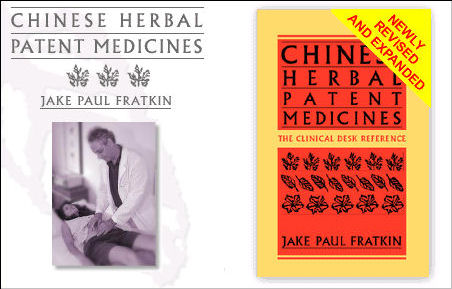 
|
